Introduction to Pork Adobo Recipe
Overview of Pork Adobo Recipe
Pork Adobo Recipe, a staple in Filipino cuisine, has a rich heritage that traces back through the ages. This dish, known for its tangy, savory, and slightly sweet flavors, is a celebrated part of the Philippines’ culinary identity.
- Historical Significance: Pork Adobo’s origins are deeply rooted in the preservation practices of early Filipino settlers.
- Cultural Impact: It represents a fusion of indigenous and foreign influences, particularly Spanish, which have shaped Filipino cooking.
Why is Pork Adobo Beloved?
The universal appeal of Pork Adobo lies in its simplicity and the depth of its flavors. Every Filipino family has their own version, making it a personal and shared experience across the nation. You can learn more about History of Adobohere.
- Versatility: Adobo can be prepared with various meats, but pork is particularly popular for its tenderness and flavor affinity with the adobo seasoning.
- Accessibility: Ingredients are readily available and the cooking process is adaptable to different cooking styles and preferences.
Article Objective
This article aims to guide you through the traditional and innovative ways to prepare Pork Adobo, ensuring you can bring this beloved dish into your own kitchen with confidence.
- Exploration of Techniques: From basic recipes to advanced culinary techniques.
- Adaptability: How to modify the dish to suit various dietary needs.
Through understanding the essentials of Pork Adobo, we not only connect with a fundamental aspect of Filipino culinary art but also with the communal spirit that this dish embodies. Savor the adventure as you summon the flavors of the Philippines to grace your dining sanctuary.
Basic Pork Adobo Recipe
Print
Classic Pinoy Pork Adobo Recipe
- Total Time: 1 hour 45 minutes
- Yield: 4 servings 1x
Description
A savory and tangy Filipino dish made with tender pork shoulder simmered in a flavorful blend of soy sauce, vinegar, garlic, and spices.
Ingredients
- 2 tablespoons vegetable oil
- 2 pounds pork shoulder (cut into chunks)
- ¼ cup cane vinegar or white vinegar
- ⅓ cup low sodium soy sauce
- 6 cloves garlic (chopped)
- 1 bay leaf
- 2 teaspoons black peppercorns
- 2 teaspoons sugar
- 2 cups water
Instructions
- Heat vegetable oil in a large pot over medium heat.
- Add pork chunks and brown on all sides.
- Pour in vinegar and soy sauce, then add garlic, bay leaf, peppercorns, and sugar.
- Stir in water and bring to a boil.
- Reduce heat and simmer for 1 to 1.5 hours until pork is tender.
- Serve hot with rice.
Notes
- Adjust seasoning to taste.
- For a richer flavor, marinate the pork in soy sauce and vinegar for 30 minutes before cooking.
- Prep Time: 15 minutes
- Cook Time: 1 hour 30 minutes
- Category: Main Course
- Method: Braising
- Cuisine: Filipino
Nutrition
- Serving Size: 1 cup
- Calories: 350 kcal
- Sugar: 3g
- Sodium: 780mg
- Fat: 22g
- Saturated Fat: 7g
- Unsaturated Fat: 13g
- Trans Fat: 0g
- Carbohydrates: 5g
- Fiber: 0g
- Protein: 29g
- Cholesterol: 95mg
Keywords: Pinoy Pork Adobo
For more Filipino recipes, visit Authentic Filipino Pork Adobo Recipe. Discover the Health Benefits of Vinegar in Filipino Cooking to learn more about the ingredients. Explore Filipino Cuisine for a broader understanding of traditional dishes.
STEPS
Step 1
Gather all ingredients.
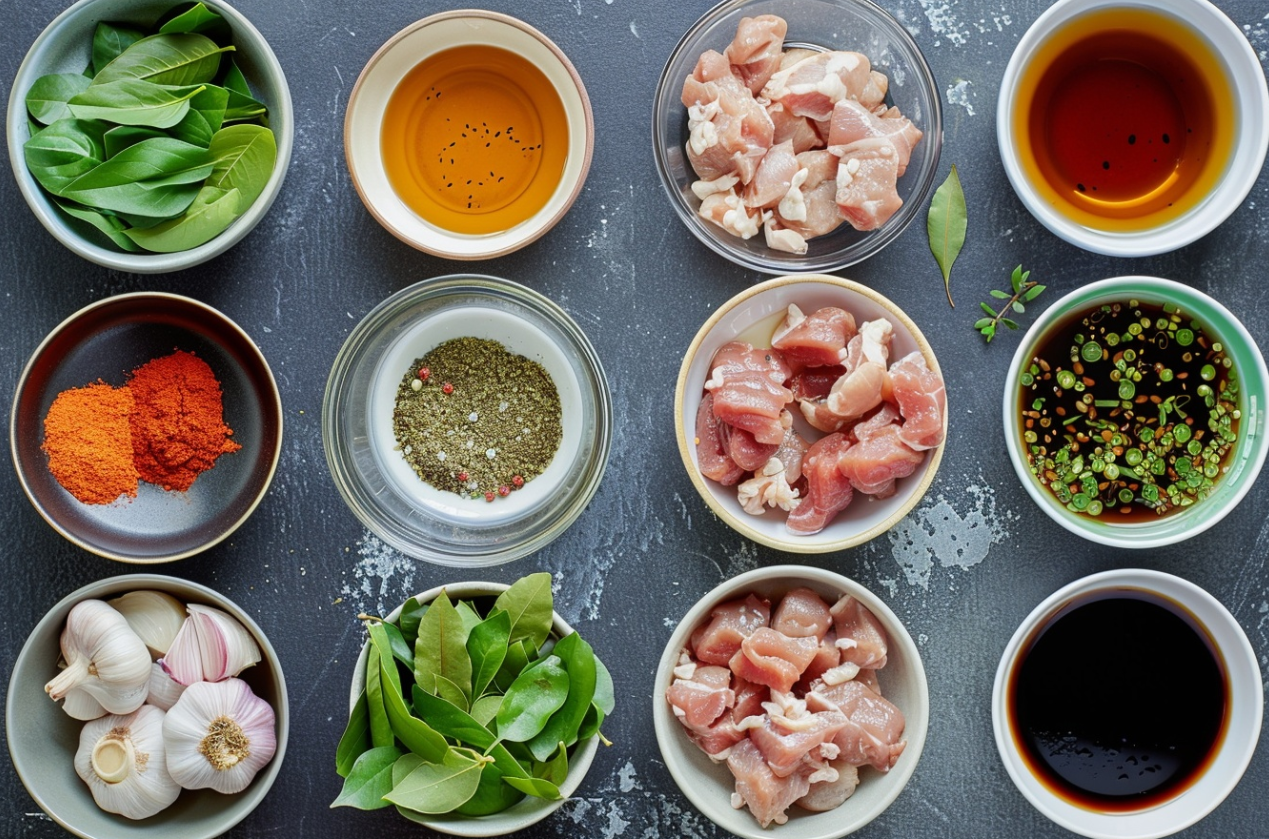
Step 2
In a medium-sized Dutch oven or pot set to medium-high heat, pour in the oil and sear the pork until it achieves a uniform brown crust on all sides.
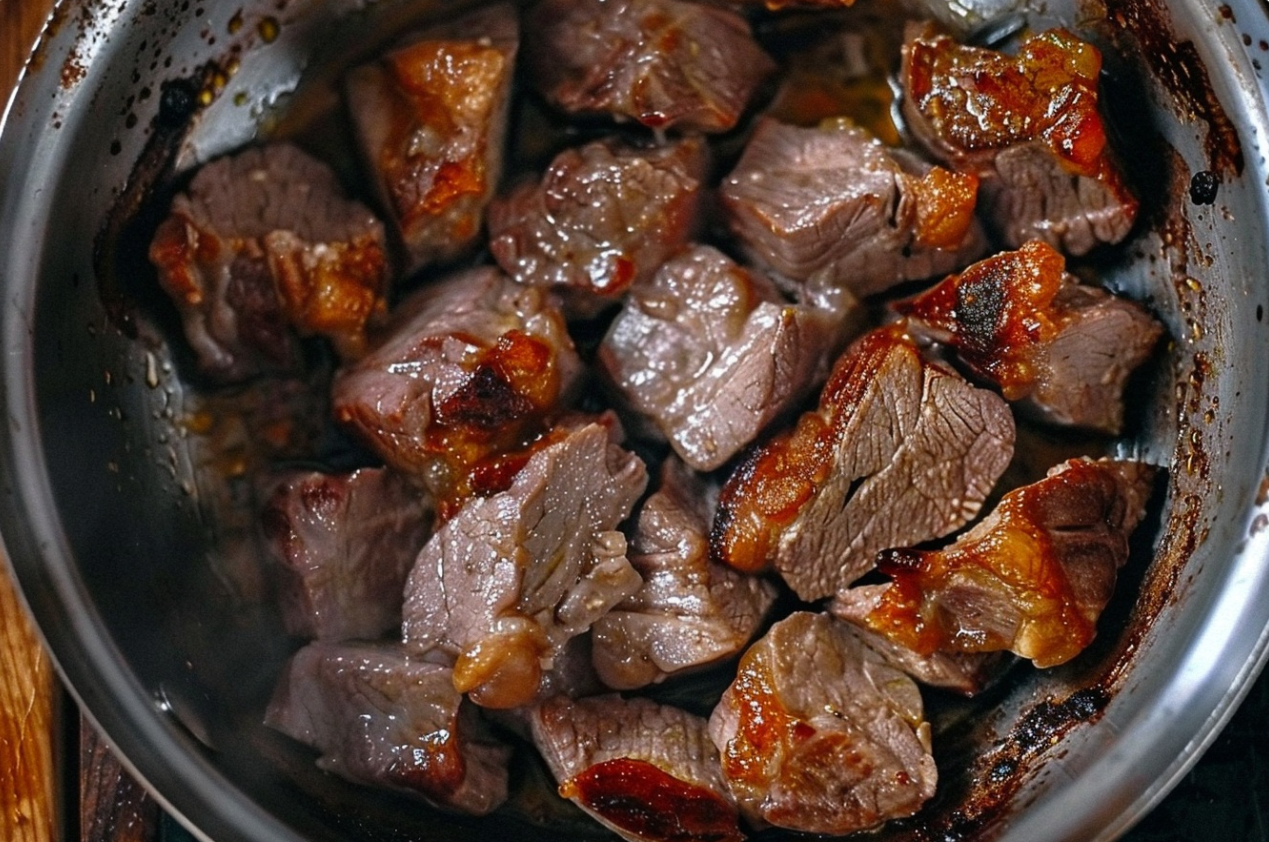
Step 3
Combine the vinegar, low-sodium soy sauce, garlic, bay leaf, black peppercorns, sugar, and water in the pot, then bring the mixture to a boil.
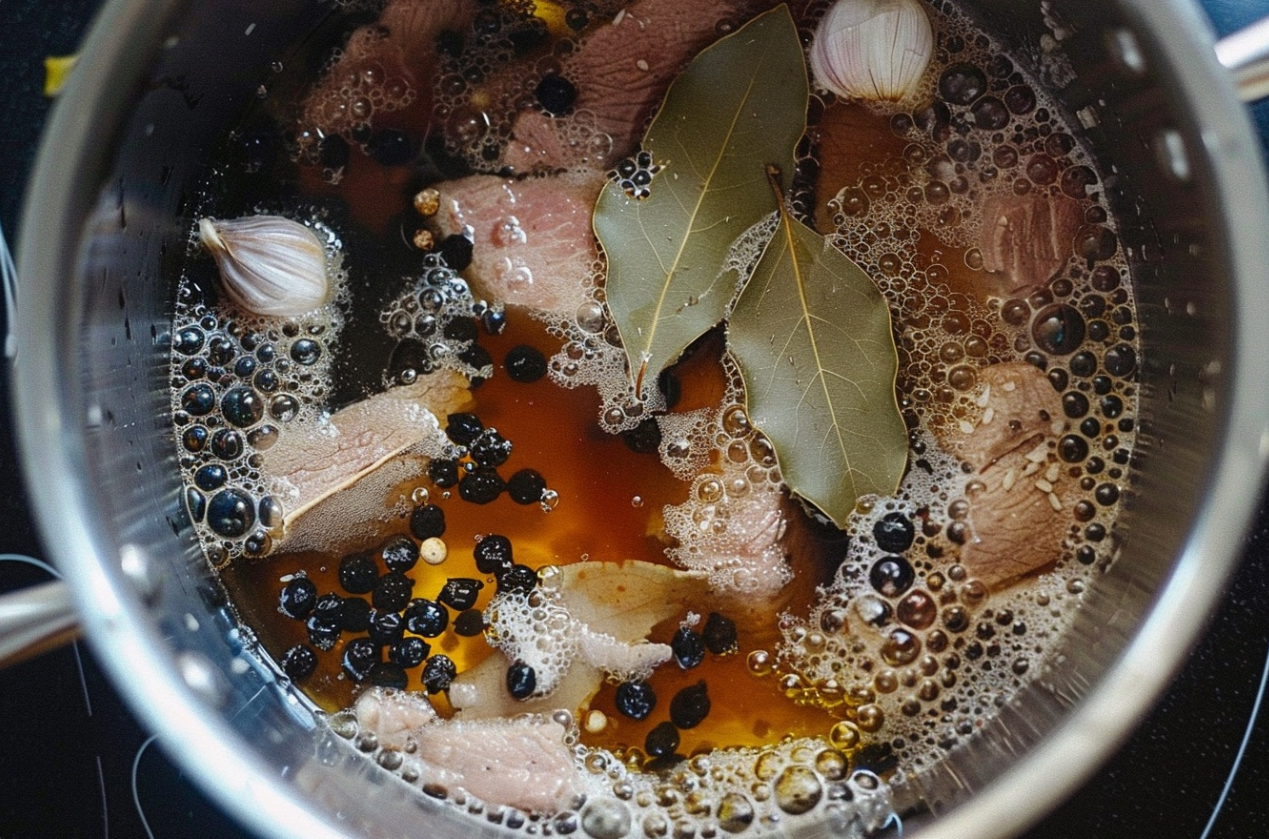
Step 4
Lower the heat to medium-low, cover the pot, and let it simmer for an hour. Afterward, uncover and keep simmering for an additional 30 minutes to thicken the sauce.
Step 5
Serve with rice!
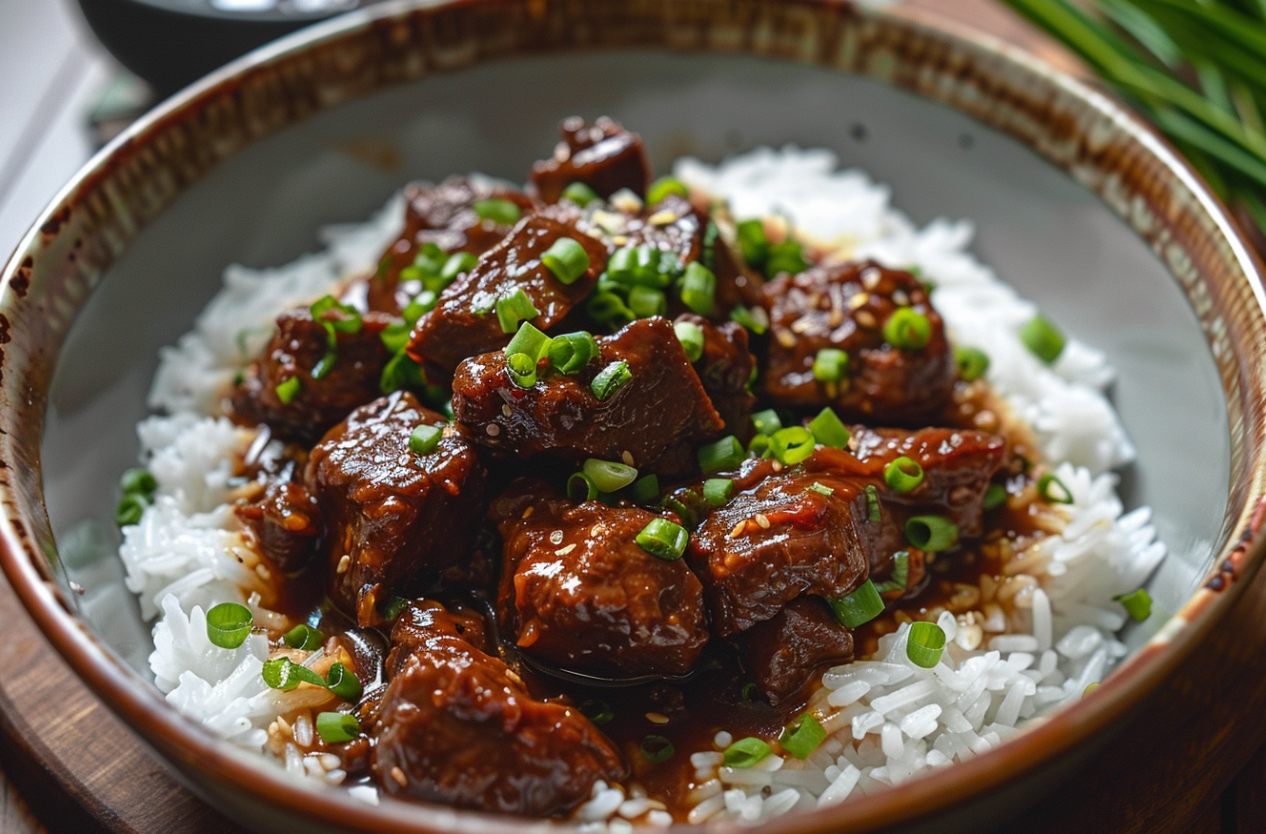
Advanced Cooking Techniques for Pork Adobo Recipe
Marinating Tips
To elevate your Pork Adobo, marinating is crucial. This process deepens the flavors, making each bite more complex and satisfying.
Time Matters: Marinate the pork for at least three hours, though overnight is ideal for maximum flavor absorption.
Ingredient Proportions: Maintain a balance between soy sauce and vinegar to ensure neither overwhelms the other.
Cooking Methods
Your choice of cooking method greatly influences the texture and flavor profile of your Pork Adobo.
Unveil the secret to tenderness: entrust your pork to the slow cooker, where flavors meld into a harmonious melody over hours.
Pressure Cooking: For those short on time, a pressure cooker can produce tender pork in a fraction of the time.
Flavor Enhancements
Incorporating additional ingredients can transform the traditional Pork Adobo into a gourmet version of itself.
Add Coconut Milk: For a richer, creamier sauce, add half a cup of coconut milk during the last 15 minutes of cooking.
Experiment with Pineapple: Adding chunks of pineapple towards the end of cooking introduces a sweet, tangy contrast that pairs wonderfully with the savory sauce.
These advanced techniques not only improve the depth of flavor in your Pork Adobo but also introduce new textures and tastes that can surprise and delight even those familiar with the traditional dish. Embrace culinary alchemy by tailoring techniques to your taste, ensuring a personalized masterpiece for every occasion. Fore more advanced recipes, visit cookingwhite.

Maintenance and Storage Tips for Pork Adobo Recipe
Storing Leftovers
Proper storage is key to extending the enjoyment of your Pork Adobo. Maintain the allure of freshness with these simple steps.
Cool Down: Ease the adobo into a state of cool serenity before refrigerating, warding off unwanted moisture and microbes.
Airtight Containers: Safeguard its essence within airtight confines, preserving its savory essence for up to three days of gastronomic delight.
Reheating Tips
Reheating Pork Adobo properly can help preserve its taste and texture.
Slow and Low: Reheat on the stovetop over low heat to keep the pork tender and prevent the sauce from burning.
Rehydrate: Should the sauce become overly thick after refrigeration, incorporate a touch of water or broth during reheating to restore its initial consistency.
Long-term Storage
For those who want to enjoy Pork Adobo beyond a few days, freezing is an effective option.
Freeze in Portions: Divide the adobo into meal-sized portions and freeze each in separate containers. Unlock convenience: portion and freeze for future culinary escapades.
Proper Thawing: To ensure safety, always defrost frozen adobo in the refrigerator overnight instead of at room temperature.
By following these simple but crucial maintenance and storage tips, your Pork Adobo will remain a reliable and tasty option for quick meals, preserving its rich flavors and tender texture for whenever the craving strikes. These practices not only enhance safety and convenience but also ensure that every reheating brings back that freshly cooked taste.
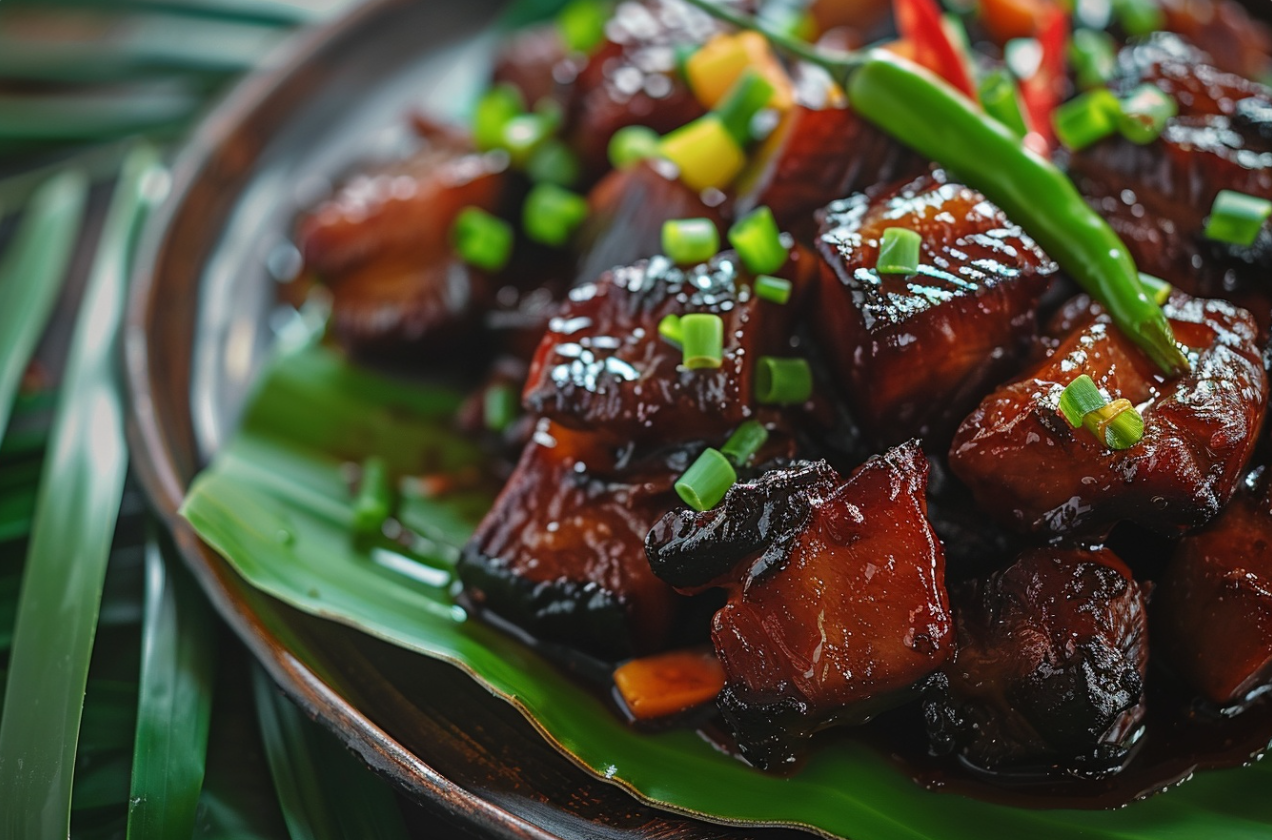
Dietary Adaptations for Pork Adobo Recipe
Healthier Versions
Making Pork Adobo healthier involves simple swaps that maintain flavor while reducing unwanted calories and sodium.
Low-Sodium Soy Sauce: Opt for the subtle allure of low-sodium soy sauce, preserving flavor without overwhelming the palate with salt.
Leaner Cuts: Use lean cuts of pork, such as tenderloin or loin chop, to reduce fat content significantly.
Vegetarian Alternatives
Creating a vegetarian version of Pork Adobo allows even more people to enjoy this traditional dish.
Tofu Alternative: Firm tofu can be marinated and prepared similarly to pork, effectively mimicking its texture and flavor absorption.
Mushrooms for Depth: Portobello or shiitake mushrooms make great substitutes, offering a meaty texture and rich flavor that absorbs the adobo marinade beautifully. Explore vegetarian adaptations of traditional adobo
Allergy-Friendly Options
Adapting Pork Adobo to avoid common allergens ensures everyone can enjoy this dish safely.
Gluten-Free Soy Sauce: Embrace inclusivity with gluten-free soy sauce, ensuring all can partake in the adobo experience.
Alternative Cooking Oils: Replace traditional oils with allergy-friendly options like avocado oil or coconut oil to cater to those with specific dietary restrictions.
These adaptations not only make Pork Adobo more inclusive but also allow for customization based on personal health needs and ethical choices. By modifying the core ingredients, this beloved dish can be transformed to fit a variety of dietary preferences while still delivering the classic taste that makes it a favorite.
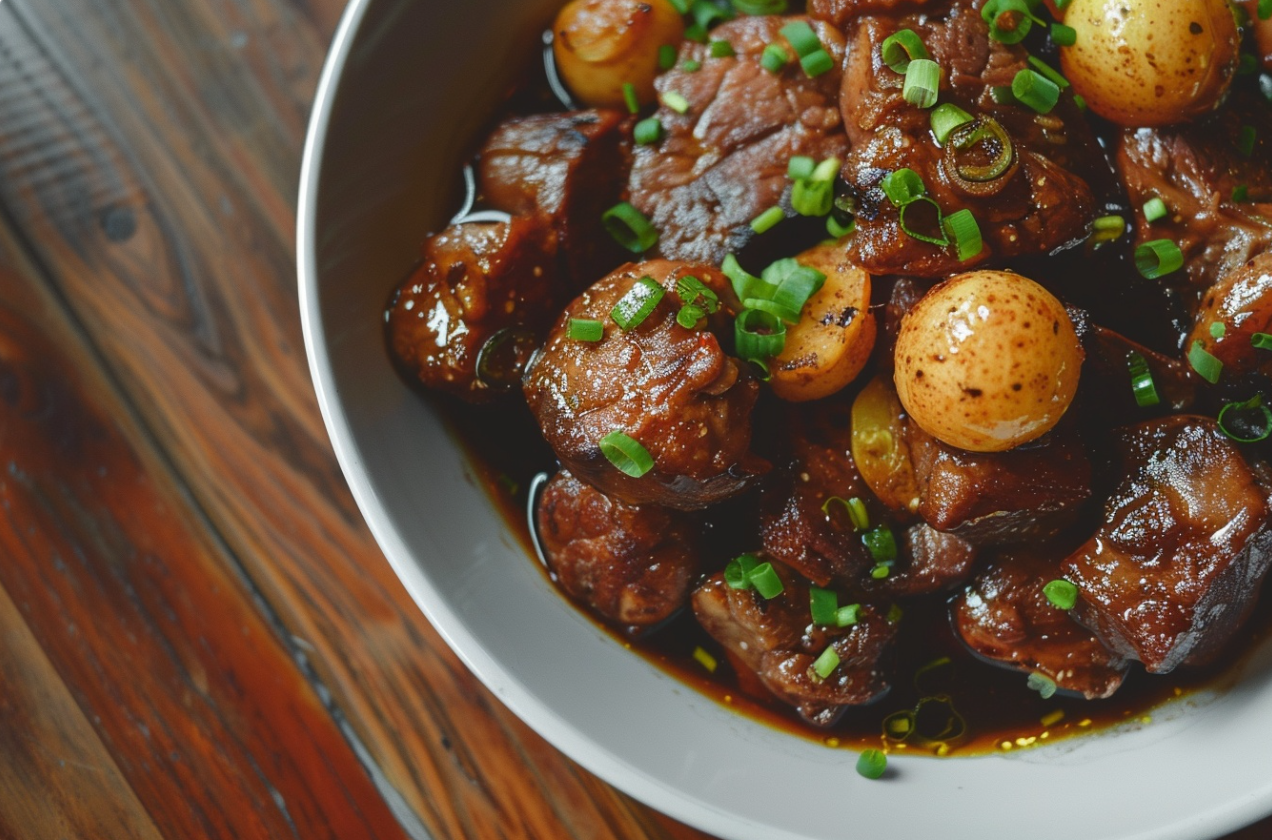
Commonly Asked Questions (FAQs) about Pork Adobo
Common Concerns
When it comes to making Pork Adobo, several questions frequently pop up, reflecting the common challenges and curiosities cooks face.
Is my adobo too salty? If your dish tastes too salty, balance it by adding a dash of sugar or a bit more vinegar.
Can I make adobo without vinegar? While vinegar is a key ingredient, you can substitute it with lemon juice or a mild apple cider vinegar for a different tang.
Troubleshooting
Sometimes things don’t go as planned when cooking Pork Adobo. Here are quick fixes to some typical issues:
Too Watery: If the sauce hasn’t reduced enough, increase the heat and simmer uncovered, allowing excess liquid to evaporate.
Not Flavorful Enough: Enhance the marinade with extra garlic or a pinch of brown sugar to deepen the flavor profile.
Variation Queries
Adaptability is one of the beauties of Pork Adobo, and cooks often experiment with it.
Can I use chicken instead of pork? Absolutely, chicken thighs or legs can be used in place of pork for a lighter version of adobo.
How do I make a spicier adobo? Introduce chili flakes or a chopped chili pepper into the marinade for a kick of heat.
These FAQs not only address common issues and variations but also provide practical tips to ensure that your Pork Adobo turns out delicious every time. Whether you’re a novice or an experienced cook, these insights can help refine your approach to this beloved dish, making it adaptable to a wide range of tastes and preferences.
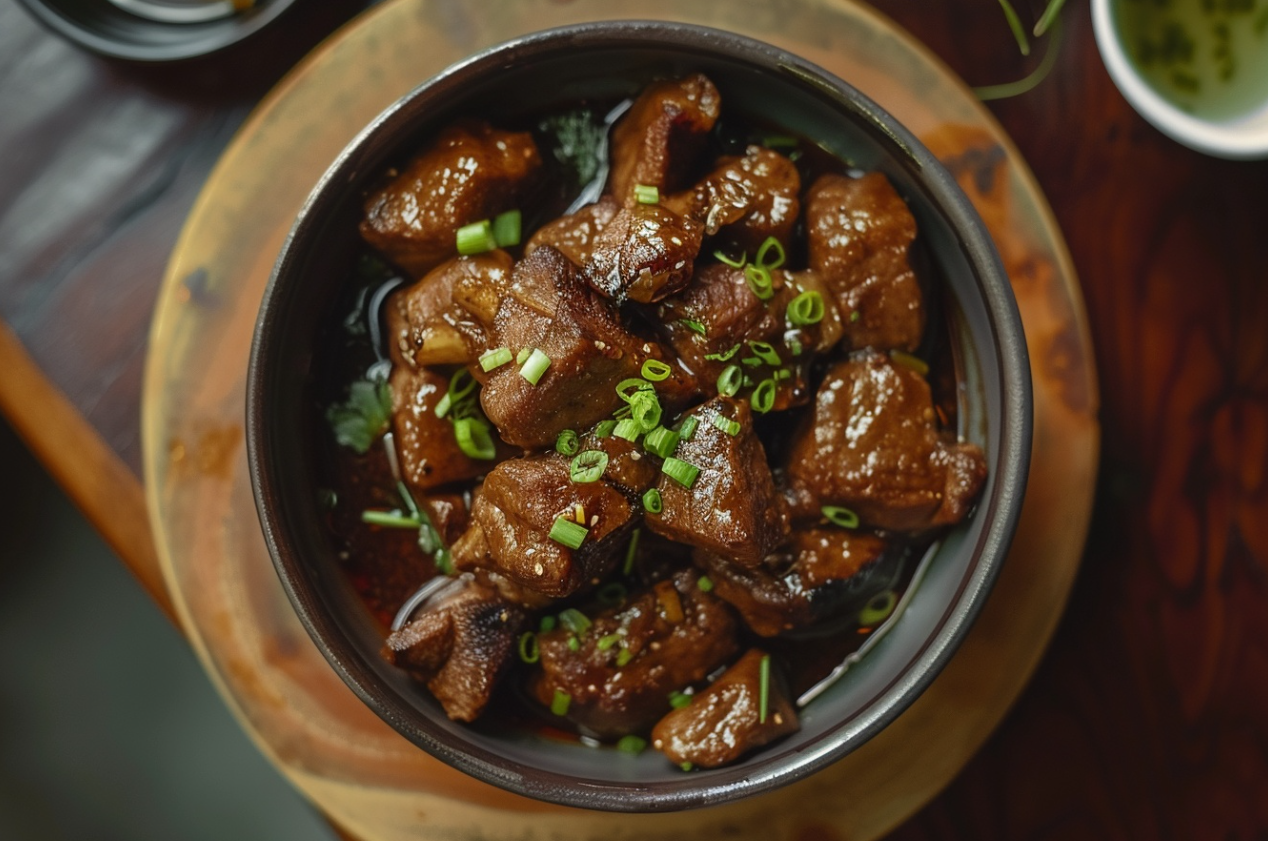
Conclusion: Mastering Pork Adobo Recipe
Embracing Traditional and Modern Techniques
Mastering Pork Adobo doesn’t just mean following a recipe; it’s about embracing a culinary tradition that spans generations. This guide has equipped you with everything from basic recipes to advanced cooking techniques, ensuring that you can tailor this classic dish to your taste and dietary preferences.
Culinary Journey Through Pork Adobo
Whether you’re a novice cook or a seasoned chef, Pork Adobo offers a versatile canvas to experiment with flavors and ingredients. The adaptability of the dish makes it perfect for various occasions, from a simple family meal to a festive gathering.
Continuing Your Culinary Exploration
As you continue to explore the rich flavors and techniques of Pork Adobo, remember that cooking is as much about the journey as it is about the destination. Each variation and adjustment you make adds a personal touch that turns traditional recipes into personal favorites.
By incorporating the tips, techniques, and adaptations discussed, you are well on your way to perfecting your Pork Adobo and perhaps even inspiring others to try this beloved dish. So, keep refining your skills and expanding your culinary repertoire with Pork Adobo as your guide.
Encouraging Culinary Creativity
Once you are comfortable with the traditional Pork Adobo, why not experiment? Culinary creativity can be sparked by substituting different meats, experimenting with the marinade ratios, or adding unexpected spices such as turmeric or curry powder for a unique twist.
Sharing the Joy of Cooking
Finally, cooking Pork Adobo can be a communal activity that brings friends and family together. Sharing your cooking process, the stories behind the dish, or even teaching someone how to make it, can add layers of enjoyment and meaning to this culinary journey.
Through continuous exploration and adaptation, Pork Adobo not only becomes a dish you prepare but a part of your cooking identity, enriched with personal touches and shared experiences. So, keep exploring, adapting, and most importantly, enjoying every version of Pork Adobo that you bring to life in your kitchen.
